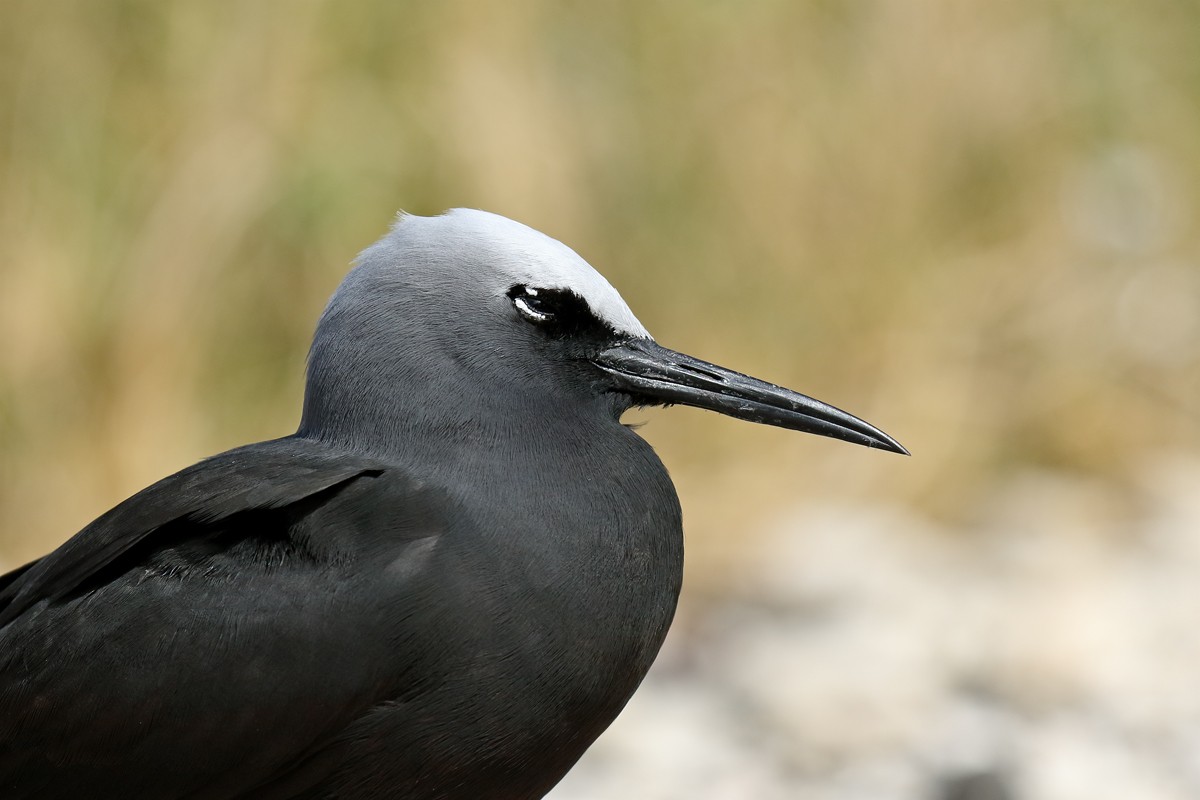Black Noddy
A species of Dark and Blue-grey Noddies Scientific name : Anous minutus Genus : Dark and Blue-grey Noddies
Black Noddy, A species of Dark and Blue-grey Noddies
Botanical name: Anous minutus
Genus: Dark and Blue-grey Noddies
Content
Description General Info
Description
The black noddy has a length of 35–37 cm (14–15 in), a wingspan of 66–72 cm (26–28 in) and a weight of 98–144 g (3.5–5.1 oz). It has dark plumage and a pale crown. There is a small white crescent under each eye and a white spot above. It has long tapering wings and a truncated tail. The sharply pointed bill is black. The feet are fully webbed and are black in most subspecies but orange in melanogenys. 
Size
30-38 cm (12-15 in)
Life Expectancy
15-27 years
Nest Placement
Ground
Feeding Habits
Black Noddy primarily feed on small fish, squid, and crustaceans. They display aerial foraging techniques, often diving to capture surface prey. Unique adaptations include their capacity to exploit prey around tuna and other predatory fish.
Habitat
Black Noddy's habitat primarily encompasses tropical and subtropical oceanic and offshore islands. They nest in diverse environments including sea cliffs, trees, bushes, rocky islands, and sandy atolls. Their adaptability extends to using coastal shrubs, herbaceous plants, and occasionally, human-made structures. Their versatile nesting locations lie within varied inland and coastal plant communities.
Dite type
Piscivorous
General Info
Feeding Habits
Bird food type
Behavior
These birds may have become known as "noddies" because of the behaviour of both sexes as they constantly dip their heads during their breeding display. They are very tolerant of humans even to the extent that they can be picked up off the nest. They feed on fish and squid which they gather by flying low over the surface of the sea and picking them up. They may associate with other seabirds in areas where predatory fish are driving small fish to the surface. The nests of these birds consist of a level platform, often created in the branches of trees by a series of dried leaves covered with bird droppings. One egg is laid each season, and nests are re-used in subsequent years. The trees used for this purpose are various but the Pisonia is most often used, and in large trees, there are often several nests. The guano produced by these birds adds large quantities of nutrients to the soil which is of great importance to the plant communities on coral islands. 
Distribution Area
The black noddy has a worldwide distribution in tropical and subtropical seas, with colonies widespread in the Pacific Ocean and more scattered across the Caribbean, central Atlantic and in the northeast Indian Ocean. At sea it is usually seen close to its breeding colonies within 80 km of shore. Birds return to their colonies, or to other islands, to roost at night. 
Species Status
Not globally threatened.
